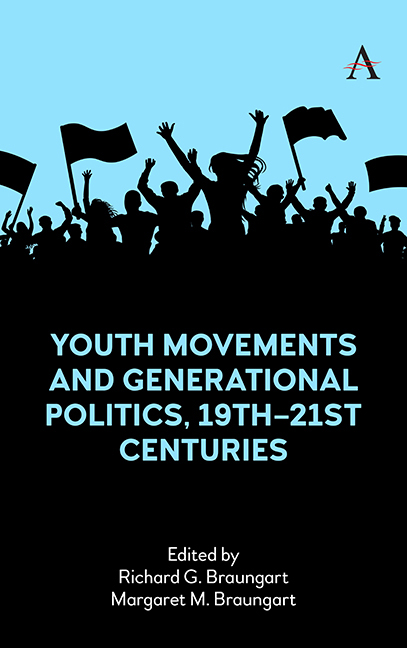1 - Youth and Social Movements
Published online by Cambridge University Press: 18 November 2023
Summary
All societies experience stability and change, and this is one of the most puzzling paradoxes in social and political theory. The persistence of social structure in society establishes order without which chaos would result. A desire for change may come about when established institutions fail to meet or to represent the legitimate needs of groups in society. Then again, because societies never achieve permanent integration and continue to develop over time, they may generate the sources of their own conflict and change. The generational cycle is one of the constant sources of social strain in history. Young people always have been impatient with the traditional order, and in recent years youth has emerged as a formidable agent of social and political change (Ortega y Gasset, 1958; Feuer, 1969).
Most members of society in the course of their life cycles experience frustration and the desire for change. However, it is only when a significant number of people become aware of their common circumstances and feel something can be done to alleviate their dissatisfaction that a social movement may appear. The discrepancy between the individual needs or aspirations of young people and the existing social and political conditions lies at the root of youth movements (Heberle, 1951; Killian, 1966; Sherif & Sherif, 1969; Bakke & Bakke, 1971; Demerath, Marwell, & Aiken, 1971; Liebert, 1971).
Youth
Youth is defined as a biosocial age stratum in society, following childhood and adolescence and preceding adulthood. This stage in the life cycle is considered to begin somewhere between the ages of 14 and 18 and to continue until approximately 22 to 25 years of age, or when youth enter the labor market on a full-time basis (Flacks, 1971; Keniston, 1971; Moynihan, 1973). Empirical evidence is mounting that suggests that specific biosocial changes occur during each stage of the life cycle, such that certain needs and developments are considered more important at one stage than at another (Ausubel & Sullivan, 1972). The stage of the life cycle defined as youth is considered crucial for the development of: (1) formal, critical thinking and future orientation (Piaget, 1967); (2) the evaluation of moral principles and values in society (Kohlberg, 1964; Piaget, 1965); and (3) the conscious search for self-identity (Erikson, 1968).
- Type
- Chapter
- Information
- Publisher: Anthem PressPrint publication year: 2023

